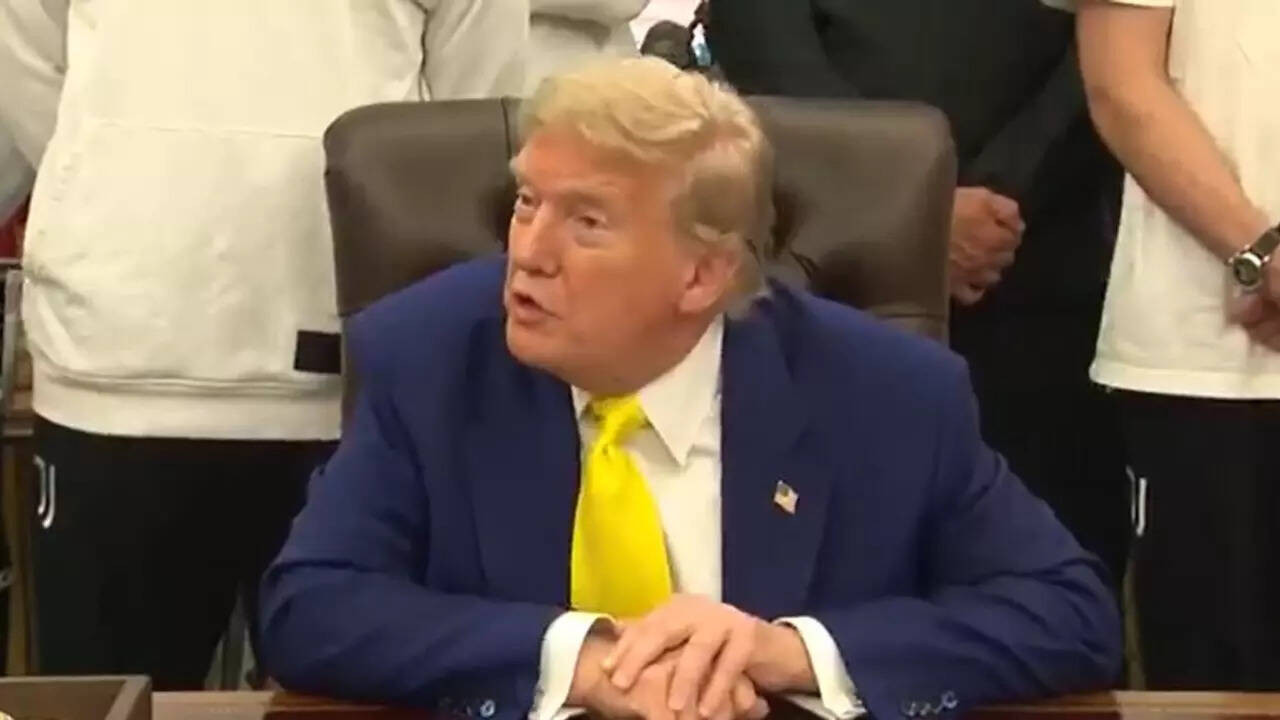President Trump announced a 10% tariff increase on Canadian goods, citing a “fake” advertisement featuring Ronald Reagan. This follows the end of trade talks and ongoing sectoral tariffs, despite the USMCA agreement maintaining tariff-free trade for most goods.
Here’s a possible blog post based on the provided article:
Steel Resolve, Tariff Tussle: A Look at the New US-Canada Trade Spat
Trade winds, usually carrying the promise of prosperity, are blowing a little rougher between the United States and Canada. A new chapter has been added to the ongoing saga of trade relations, with the US recently announcing the imposition of a 10% tariff on Canadian steel. The rationale? Washington is calling it a response to what they deem a “hostile act.” But what exactly transpired, and what does this mean for businesses and consumers on both sides of the border?
The specifics revolve around Canadian steel imports. The US administration maintains that Canada has been unfairly flooding the American market with cheaper steel, undermining domestic producers and, they argue, potentially jeopardizing national security. This action echoes similar moves made in the past, reminiscent of the protectionist policies of the Reagan era, although the scale and context are considerably different.

The Canadian government, unsurprisingly, views the situation quite differently. They strongly deny the accusations of unfair trade practices and vehemently oppose the newly implemented tariffs. In fact, they see this move as a clear violation of existing trade agreements, including the USMCA (United States-Mexico-Canada Agreement), which was designed to foster mutually beneficial trade within North America. Discussions are ongoing, but tensions are palpable.
The Ripple Effect: Understanding the Impact of Steel Tariffs
The impact of these tariffs extends far beyond the steel industry itself. For American manufacturers who rely on imported Canadian steel, the tariffs translate to higher costs. This, in turn, could lead to increased prices for consumers, potentially fueling inflation, something already concerning economists. These costs could have a particularly detrimental effect on industries such as the automotive and construction sectors, both major consumers of steel.
On the Canadian side, the tariffs pose a significant threat to steel producers and the communities that depend on them. Job losses are a real possibility if Canadian steel becomes less competitive in the US market. This could trigger a chain reaction, impacting related industries and the overall Canadian economy. It is a delicate balance, and any misstep could have widespread repercussions.
Retaliation and Resolution: Charting a Path Forward
The big question now is, what comes next? History suggests that trade disputes often lead to retaliatory measures. Canada has already hinted at potential countermeasures, which could involve imposing tariffs on American goods. This tit-for-tat scenario could escalate into a full-blown trade war, harming businesses and consumers on both sides of the border.
Finding a resolution that satisfies both parties will require careful negotiation and a willingness to compromise. Perhaps a more transparent system for monitoring steel imports and addressing concerns about unfair trade practices could be a starting point. Alternatively, both countries may need to explore alternative strategies that don’t involve hindering trade. A deeper understanding of the factors influencing the steel tariffs could lead to creative solutions, strengthening both nations’ economies.
For businesses navigating these turbulent waters, agility and adaptability are key. Diversifying supply chains, exploring alternative markets, and closely monitoring developments in trade policy are essential strategies. Staying informed and proactively managing risk can help businesses weather the storm and emerge stronger on the other side. For further insights on navigating global trade complexities, see our article on [supply chain resilience](internal-link-to-relevant-article).
The Future of US-Canada Trade: A Question of Cooperation
The current trade dispute underscores the complexities of international trade relations. While disagreements are inevitable, finding ways to resolve them amicably and avoid protectionist measures is crucial for fostering economic growth and stability. Whether the current situation is a temporary setback or a sign of deeper divisions remains to be seen, but it underscores the importance of open communication, fair trade practices, and a commitment to mutually beneficial outcomes in the US-Canada trade partnership. A collaborative approach, focused on shared prosperity, will ultimately serve both nations best.







